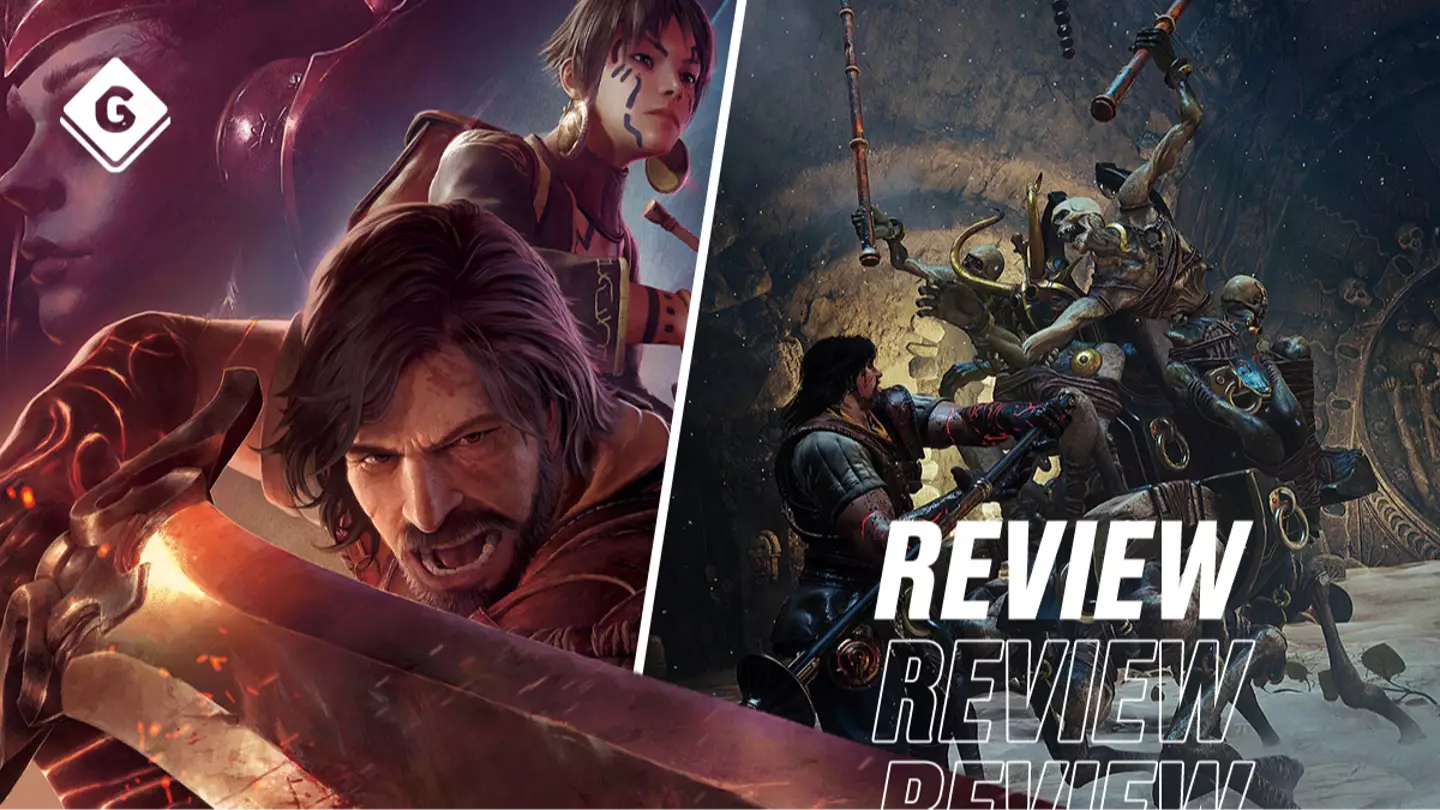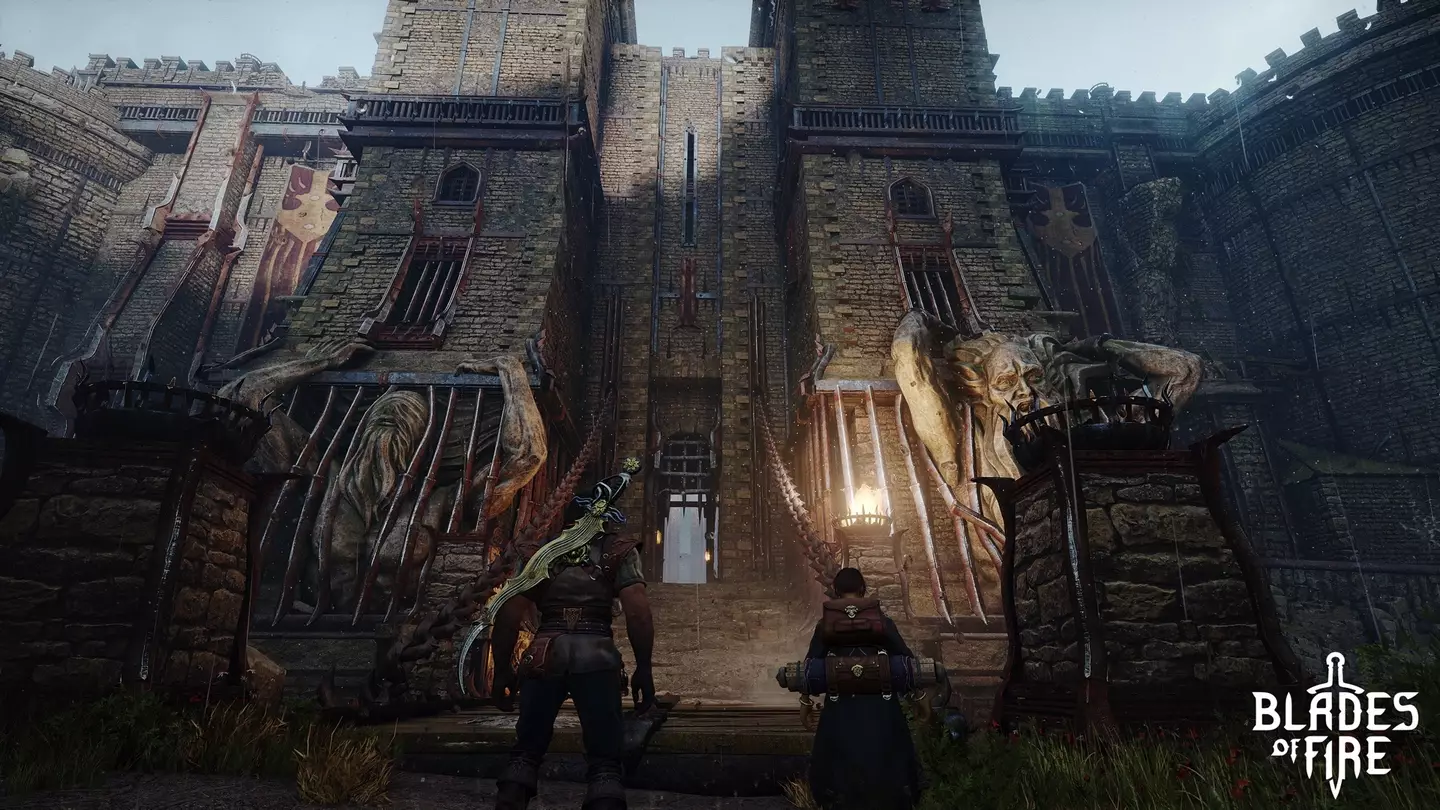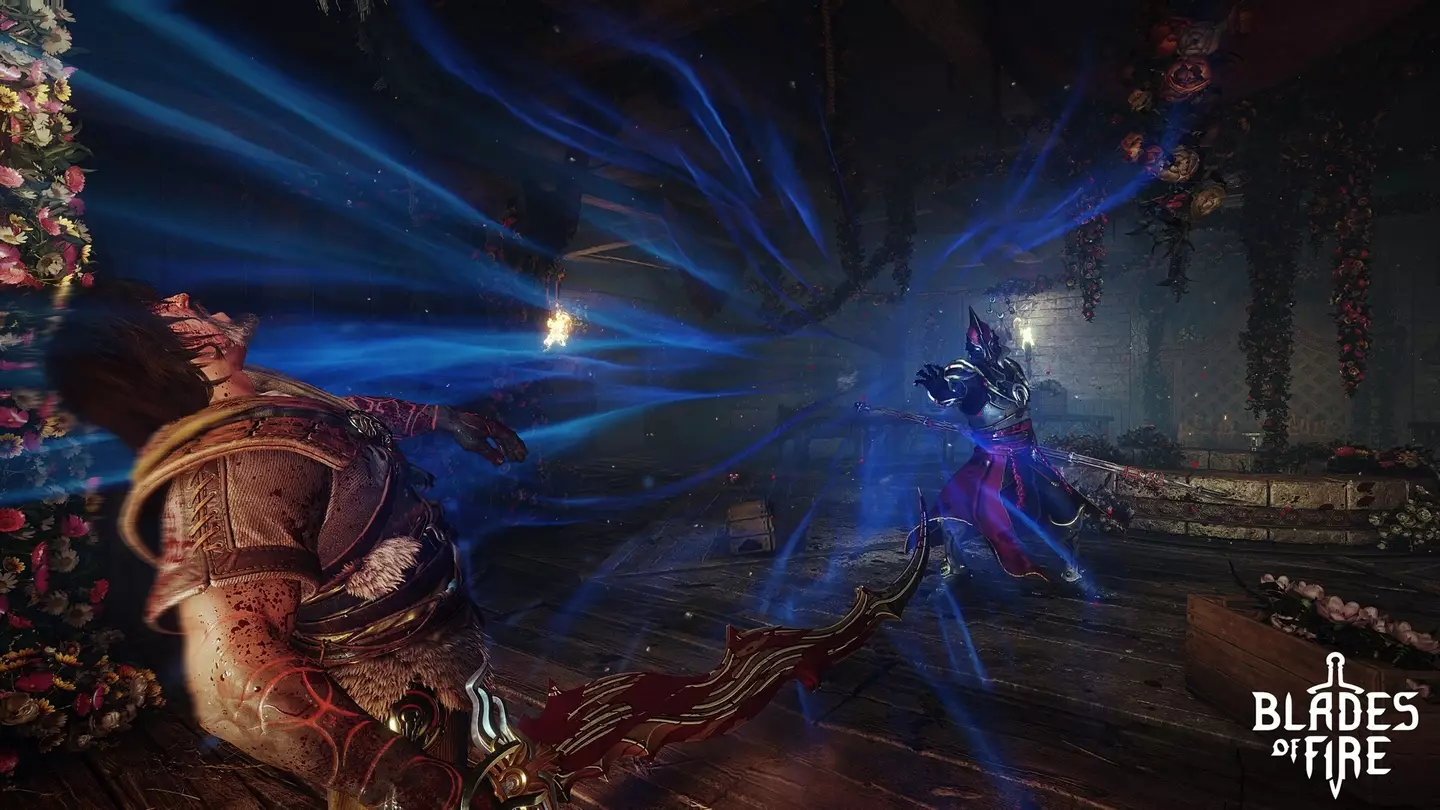
Blades of Fire is most certainly not a game for the faint of heart, or perhaps I should say the low of patience. That’s a bold claim for me to make because I am exactly that. I’ve never been known for being the most persistent of gamers which is why, typically, I stay far away from the soulslike genre. I’ve always accepted that if a game can be described as “challenging” or “punishing”, it’s not for me. You may have a preconception then about my thoughts on Blades of Fire but this is where the twist in the tale comes, my friend.
Blades of Fire is just that; its combat and gameplay formula are both challenging and punishing - and yet, I found it distinctly moreish. Blades of Fire can be gruelling, that I will not deny, but once you’ve got to grips with its various systems, there’s a thrilling experience here that rewards those with the power to push on.
This third-person action-adventure centres around the playable warrior Aran de Lira, the owner of a sacred hammer that enables him to craft steel weapons. The significance of this is that the realm which Aran inhabits is ruled by the evil Queen Nerea who has cast a curse that turns her enemy’s steel weapons to stone, making them useless against her forces. As such, Aran is the realm’s only hope; off he sets to the Royal Palace in a bid to eliminate Nerea, accompanied by a young scholar Adso.
Advert
You can view the game’s trailer below.
‘How challenging are we talking, Kate?’ is the question I’m imagining is on your mind. Well, Blades of Fire has quite a few ‘systems’ to get to grips with, the main example of which is the game’s forge. Throughout his journey, Aran will stumble across various anvils which will act as the game’s save points, much like bonfires, for example, in Dark Souls. They can be used to transport yourself across the map and if you die, it is to your most recently visited anvil that you will return. This is also how Aran is able to transport to The Forge.
When you kill enemies, you’ll acquire materials; kill enough of a certain enemy type, and you’ll gain blueprints, of sorts, of their weapon type. In The Forge, you can put all of these things to use, crafting Aran new weapons. It’s going to be something you’ll do a lot. You see, if you die in Blades of Fire, the weapon you died using will drop where you perished, prompting a troubling choice. Do you return to that spot and try your hand at the encounter again? Or do you visit The Forge to create something new?
Advert
Beyond this, so too will weapons degrade. When you create a weapon, you’ll essentially play a minigame that tasks you with ‘hammering’ the weapon into shape; you’ll want to get equalizer bars to match the shape of the white line on screen. Nail it, and you’ll gain four ‘repairs’ to use on your weapon when it degrades. It’s much harder than it looks though, and I’d typically end up with one or two repairs at most. When those repairs are used up, and let me tell you, blades dull rapidly, you’ll be forced to forge new weapons. You can likely already see what I’m talking about with the vast number of ‘systems’.
This isn’t even all that you have to keep in mind when using The Forge. You don’t simply craft a bog standard weapon. You can change the size of the head or blade, handle or shaft, and materials to tailor your weapon - which can be anything from a spear to a polearm - to suit your fighting style or to gain an advantage over the specific enemy types that stand in your way. For example, against the game’s common foes, my heavy-headed polearm fared nicely, delivering quick punishing blows. Against a larger enemy though? Wielding that kind of weight used up way too much stamina - which you must recharge by blocking - opening me up to some serious damage as I ran out of energy to dodge away.

That’s a lot of information, I know. I was overwhelmed when I started the game but you will understand the benefits of The Forge’s complex systems the further you progress into Blades of Fire. I very rapidly learnt I couldn’t just charge in with any old weapon. My spears and swords would blunt far too quickly and if I hadn’t forged a bladeless weapon like a polearm or failed to retrieve it after an earlier defeat, I’d quickly find myself faced with enemies I had no effective weapons I could use against. That may not sound like a ‘good’ thing, but it’s only when I got myself into those infuriating situations that Blades of Fire’s formula began to click. Once you strategise and think ahead, there's magic to be found here.
Advert
Thankfully, Aran can equip four weapons at once so should you lose one on the map, you likely won’t be caught short. You’ll need various types though in order to face the differing threats in your path. Like I said, blades dull quickly and you’ll soon find armoured enemies that are impossible to wound if your blade is duller than 60% or 80%. There’s such joy and elation to be found though when you build the right array of weapons and perfectly tear through a specific section that may have previously left you screaming as you got whisked back to the nearest anvil for the umpteenth time.
I should stress though, that should you lose a weapon, you very likely are going to want to retrieve it. You see, the more success you have with a particular weapon, the more ‘legendary’ it becomes - and while venturing back into a battle that just saw me off didn’t always fill me with happiness, I have to commend the devs for adding this upgrade mechanic that stops players from relying on The Forge quite so heavily.
Weapons aside, combat is an additional test of patience. I don’t want to undersell the importance of stamina. Wielding a weapon reduces stamina, as does running and dodging. Parrying and blocking restores it but your weapon can only deflect a couple of hits before an enemy breaks through. As such, you need to bide your time against more difficult bosses, dodging and parrying far more in order to deliver a quick blow. On the whole, I did come to enjoy the combat even if it did, occasionally, get a tad repetitive against some of the tankier enemies. There’s only so long I can dodge, parry, strike and repeat before it gets dull. On occasion, I’d also go to land a strike only for Aran to decide to aim at a wall in cramped areas instead of the enemy itself, leaving me open to take some serious damage.

Advert
And damage is not something you want to take. Aran is equipped with three heals and can increase his health over time but you’ll likely very quickly use those up. Enemies deal quite serious damage, even on the game’s ‘easy’ difficulty which isn’t easy at all. Run out of heal potions and you’ll have to hope you can make it to the next anvil to ‘rest’ and restore your supplies. Blades of Fire does, as you might’ve guessed though, employ the soulslike classic of respawning enemies should you choose to rest.
While the game doesn’t feature a fully open-world, it’s not all that far off. Blades of Fire’s map is all interconnected, though there are many areas closed off when you begin the game. Progress through the story and you’ll slowly open the map up. I’m somewhat relieved that’s the case as just like with its combat, Blades of Fire throws you in at the deep end when it comes to exploration. This is a game with no real quest markers or missions. Instead, you’ll press up on the D-pad and get a vague comment from Aran or Adso on your mission. “We need to reach The Crimson Fort,” they might say. Well, that’s all well and good lads, but I’ve got a map with no placemarkers or names written upon it.
As such, exploration is a bit of a lucky dip. In classic Elden Ring style, you might stumble into a combat scenario you are simply not equipped for. Thankfully, the mini sections of the map that you are plonked within aren’t too large so while it may take a while to work out your heading and route, canvassing the entirety of an area soon reveals answers and I have to say, I always felt like a genius for progressing onto the next section of the game with so little help. It would be remiss not to mention Blades of Fire’s story too which I personally found very interesting; I’m loath to delve too far into it as developer MercurySteam’s synopsis is vague so I’m inclined to keep mine that way too.
Blades of Fire isn’t for everyone, and that’s fine. Losing your best weapon only to be transported right back to the beginning of a segment with only degraded and broken remaining weapons can be a truly painful experience, but if you persevere and push on, you’ll soon discover that Blades of Fire is a real gem. Its original focus on weapon building is refreshing, and there’s something about it that feels modern and yet so distinctly old-school. Blades of Fire is challenging and punishing, it’s true, but as Taylor Swift once said, “Nothing safe is worth the drive.” Prevail through the peril, and Blades of Fire will reward you.
Advert
Pros: Intriguing story, creative forge system
Cons: Combat is occasionally clunky, grindy qualities won’t be for everyone
For fans of: Elden Ring, God of War, Dark Souls
8/10: Excellent
Blades of Fire launches on 22 May on PlayStation 5 (version tested), Xbox Series X/S, and Windows PC. A review code was provided by the publisher. Read a guide to our review scores here.
Topics: Reviews, PlayStation, PlayStation 5, Xbox, Xbox Series S, Xbox Series X, PC